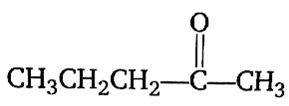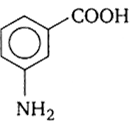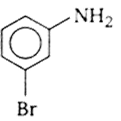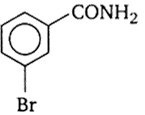 Multiple Choice Questions
Multiple Choice QuestionsAcetone is treated with an excess of ethanol in the presence of hydrochloric acid. The product obtained is.



The correct order of decreasing acid strength of trichloroacetic acid (A), trifluoroacetic acid (B), acetic acid (C) and formic acid (D) is
B > A> D > C
B > D > C > A
A> B > C > D
A> B > C > D
Which of the following compounds will give a yellow precipitate with iodine and alkali?
Acetophenone
Methyl acetate
Acetamide
Acetamide
Clemmensen reduction of a ketone is carried out in the presence of which of the following?
Zn -Hg with HCl
LiAlH4
H2 and Pt as catalyst
H2 and Pt as catalyst
In a set of reactions, m-Bromo benzoic acid g ave a product D. Identify the product D. 




A reaction of a carbonyl compound with one of the following reagents involves nucleophilic addition followed by the elimination of water. The reagents is
a Grignard reagent
hydrazine in presence of feebly acidic solution
hydrocyanic acid
hydrocyanic acid
Which of the following compounds undergoes nucleophilic substitution reaction most easily?



Match the compounds given in the list I with List II and select the suitable option using the code given below.
|
|
List I |
|
List II |
|
A. |
Benzaldehyde |
1. |
Phenolphtalein |
|
B. |
Phthalic anhydride |
2. |
Benzoin Condensation |
|
C. |
Phenyl benzoate |
3. |
Oil of wintergreen |
|
D. |
Methyl salicylate |
4. |
Fries rearrangement |
|
A
|
B
|
C
|
D
|
|
4
|
1
|
3
|
2
|
|
A
|
B | C | D |
| 4 | 2 | 3 | 1 |
|
A
|
B | C | D |
| 2 | 3 | 4 | 1 |
|
A
|
B | C | D |
| 2 | 3 | 4 | 1 |
